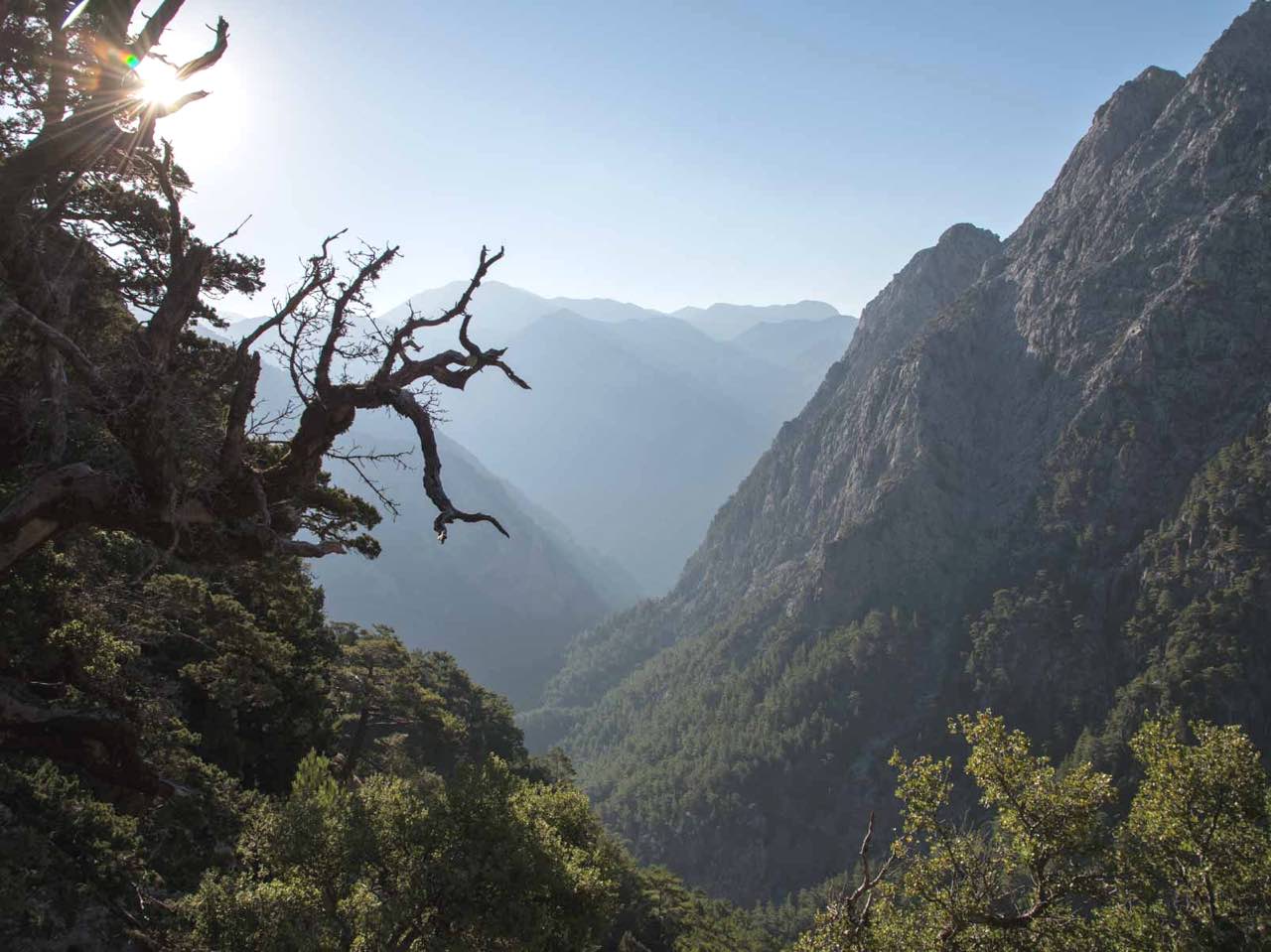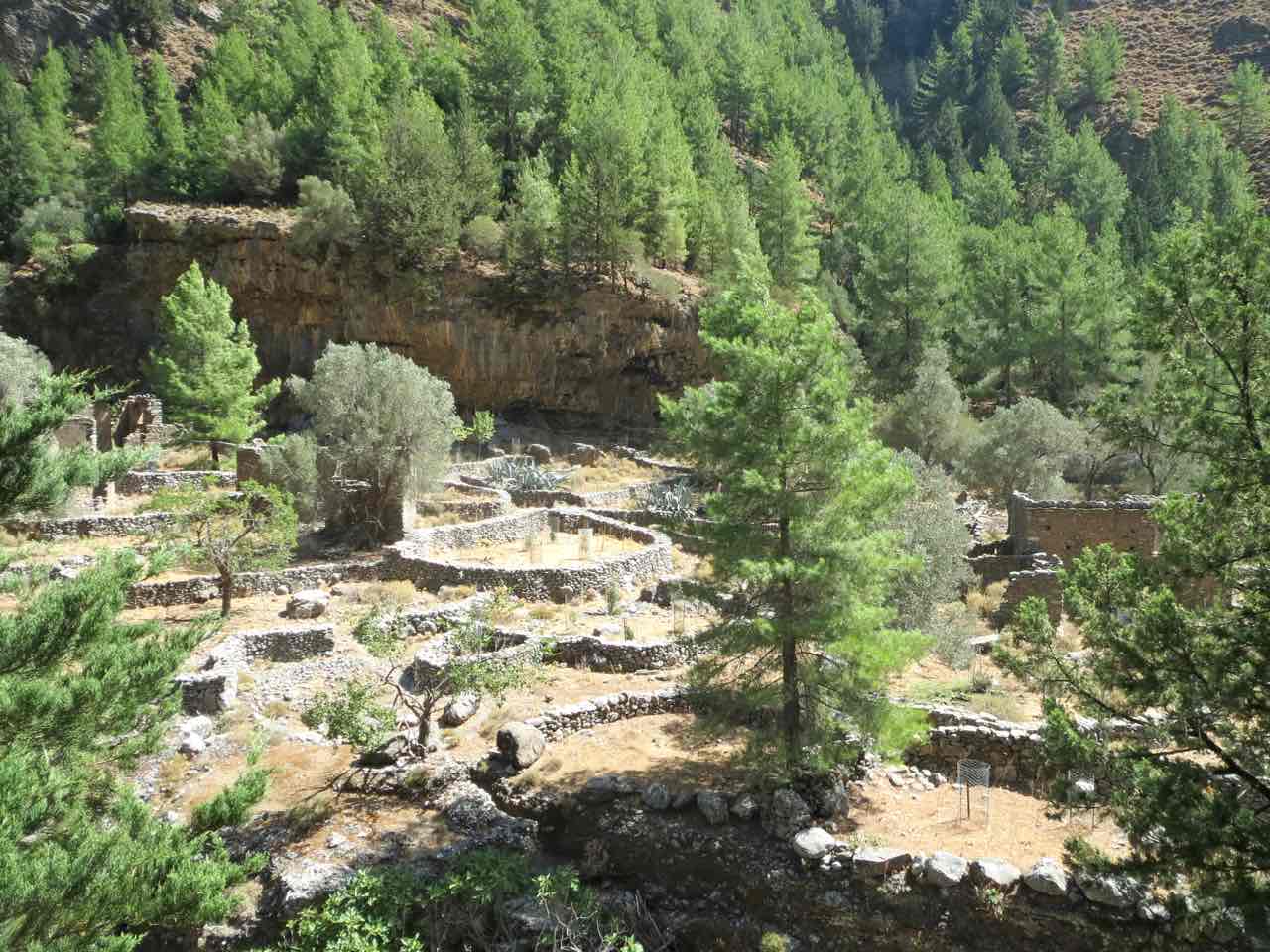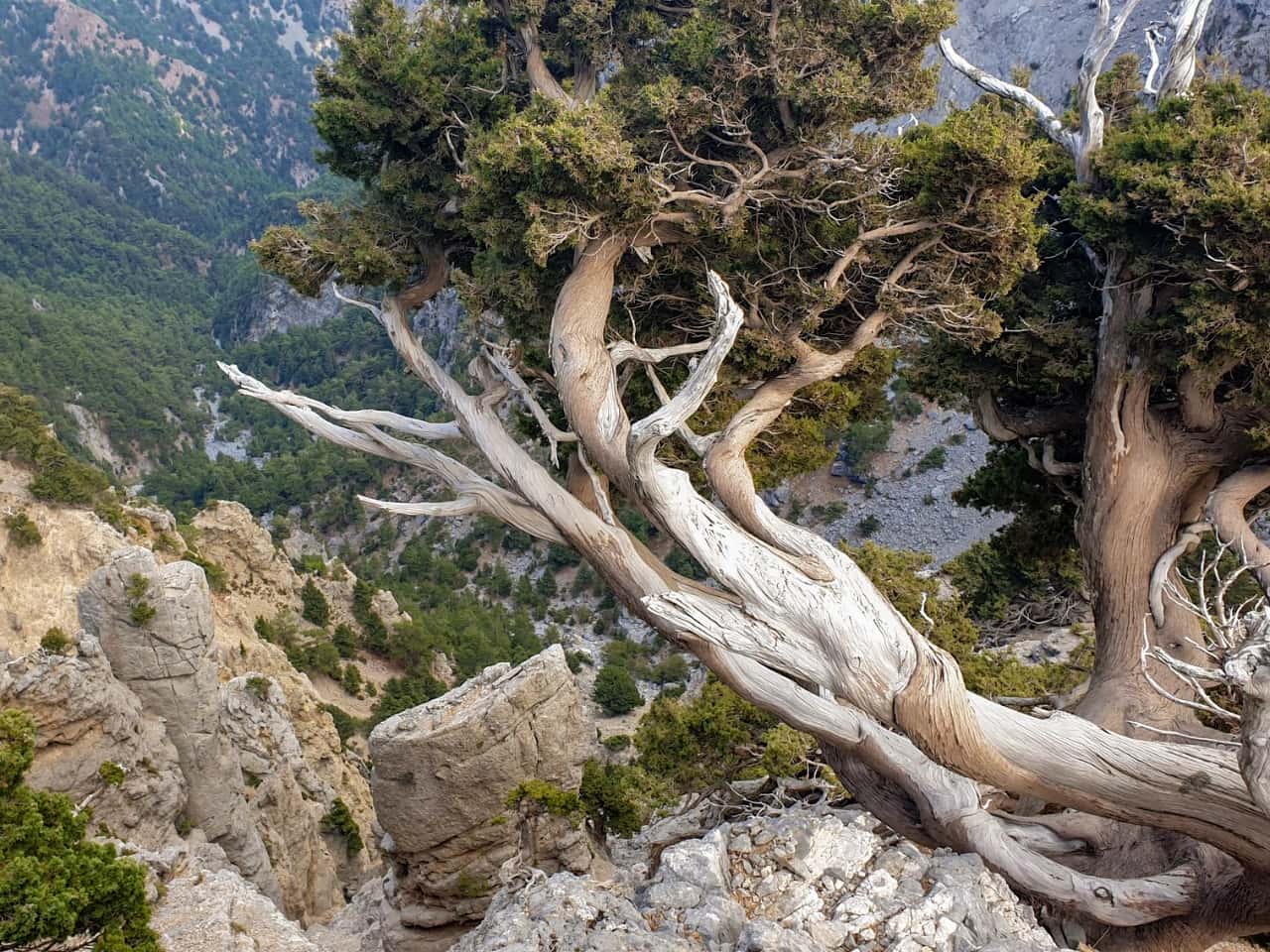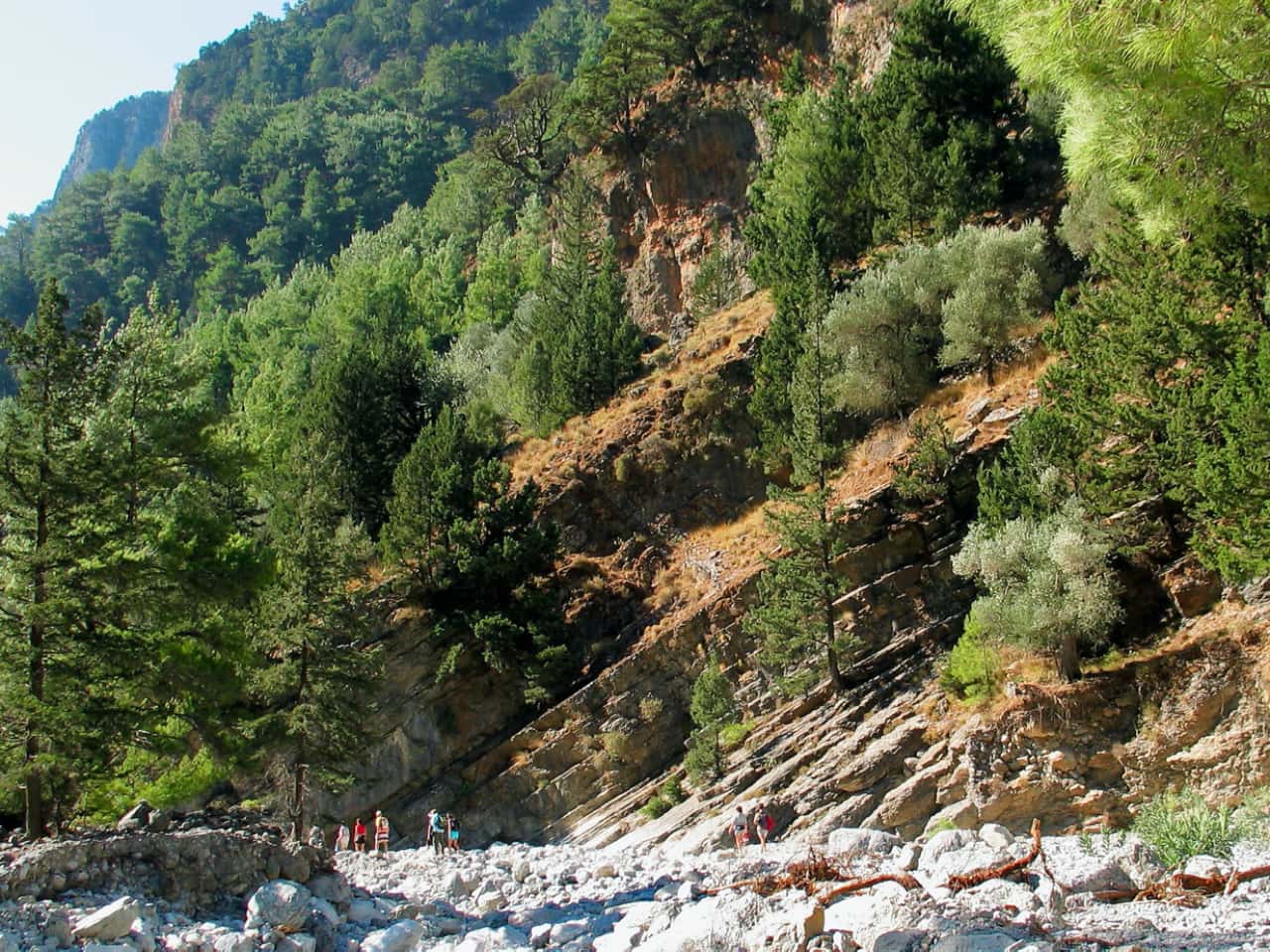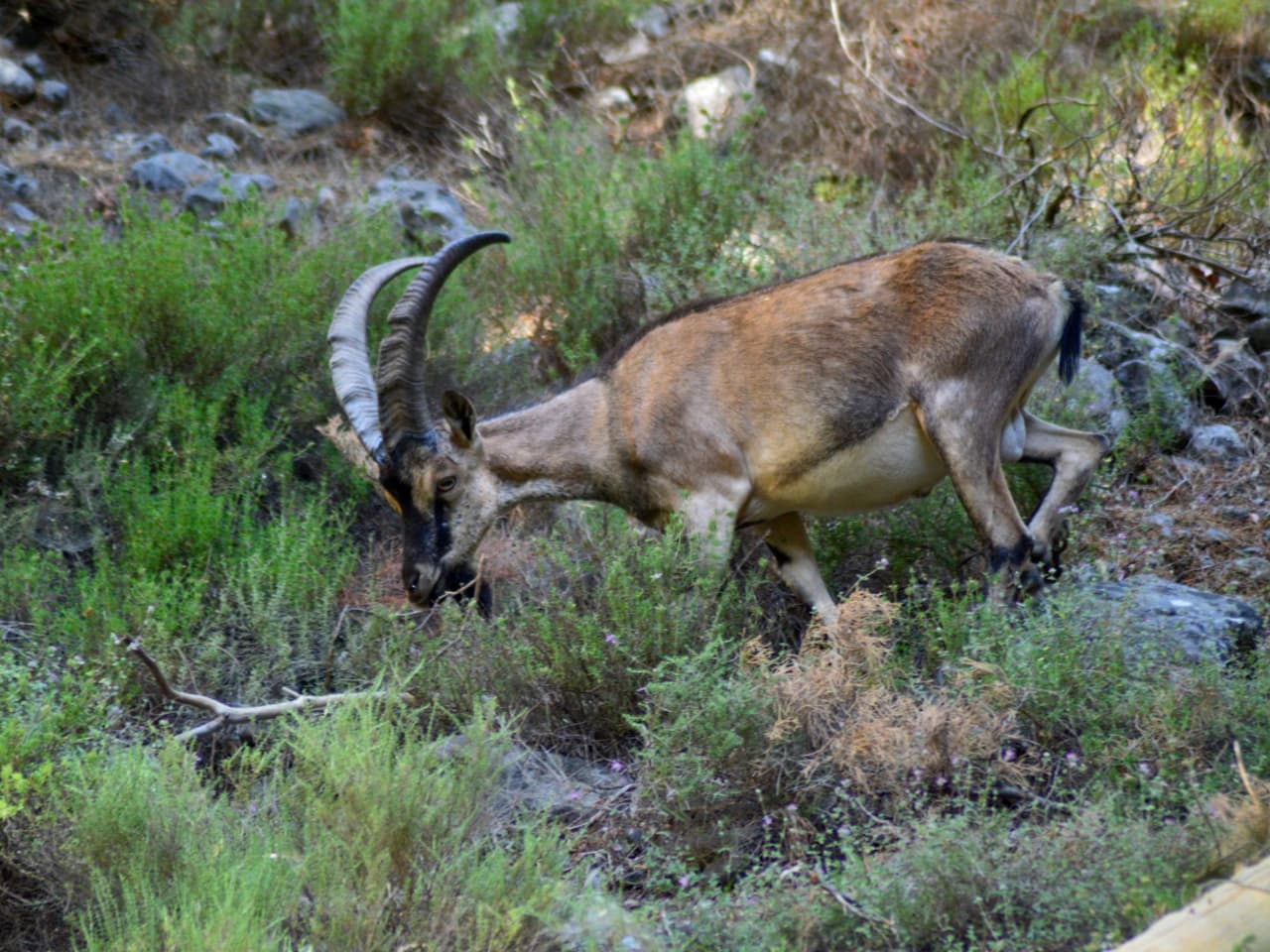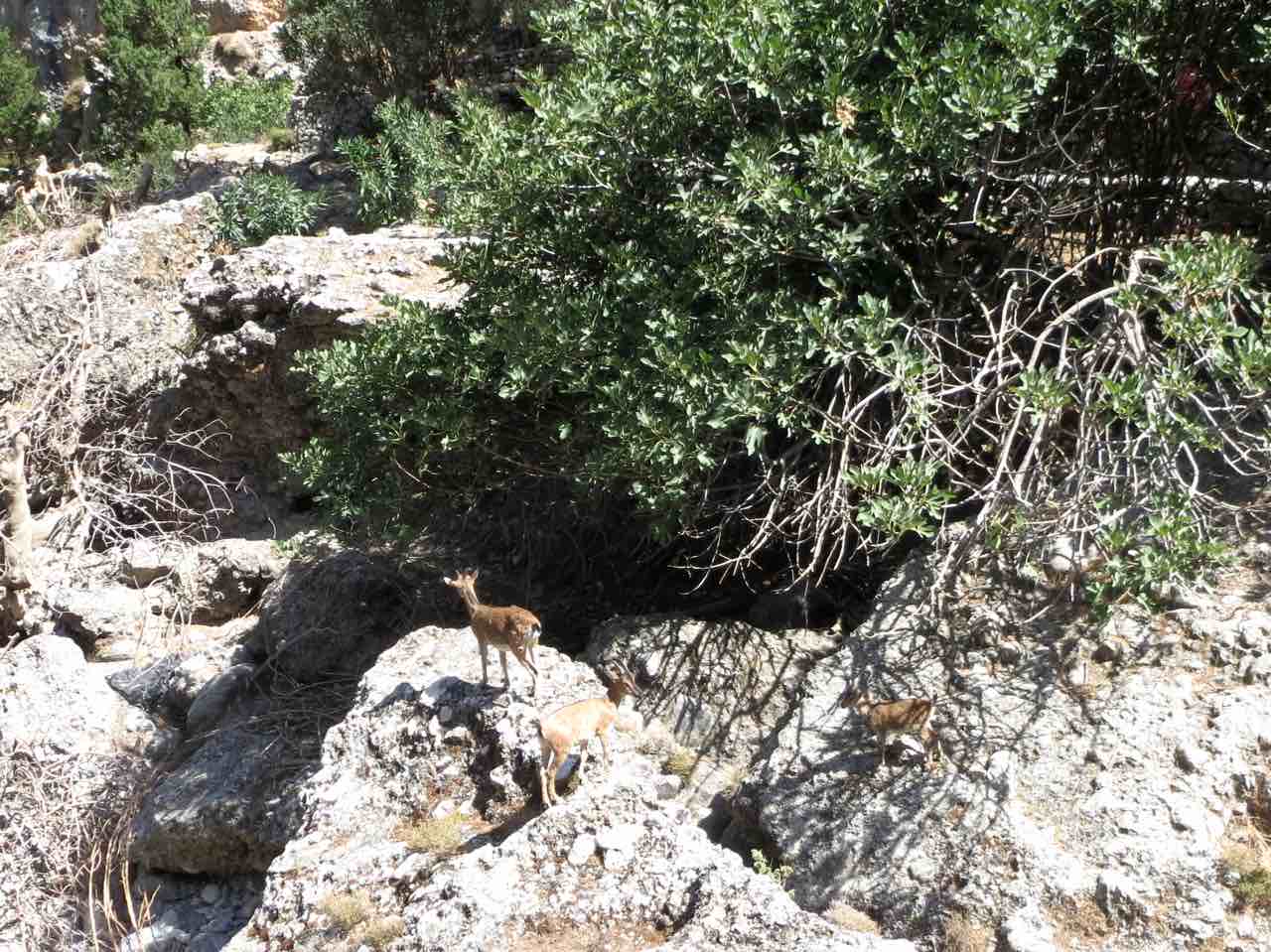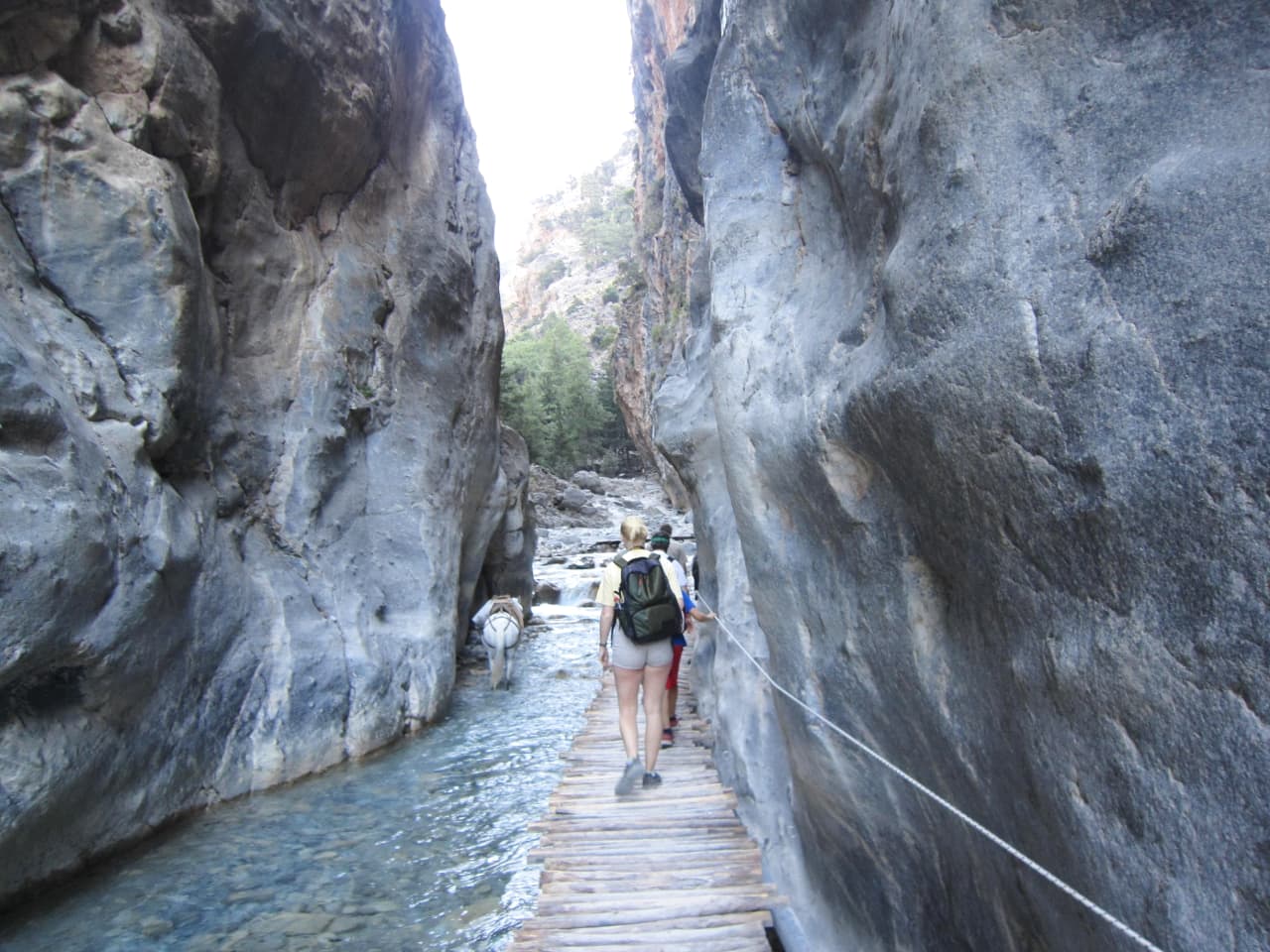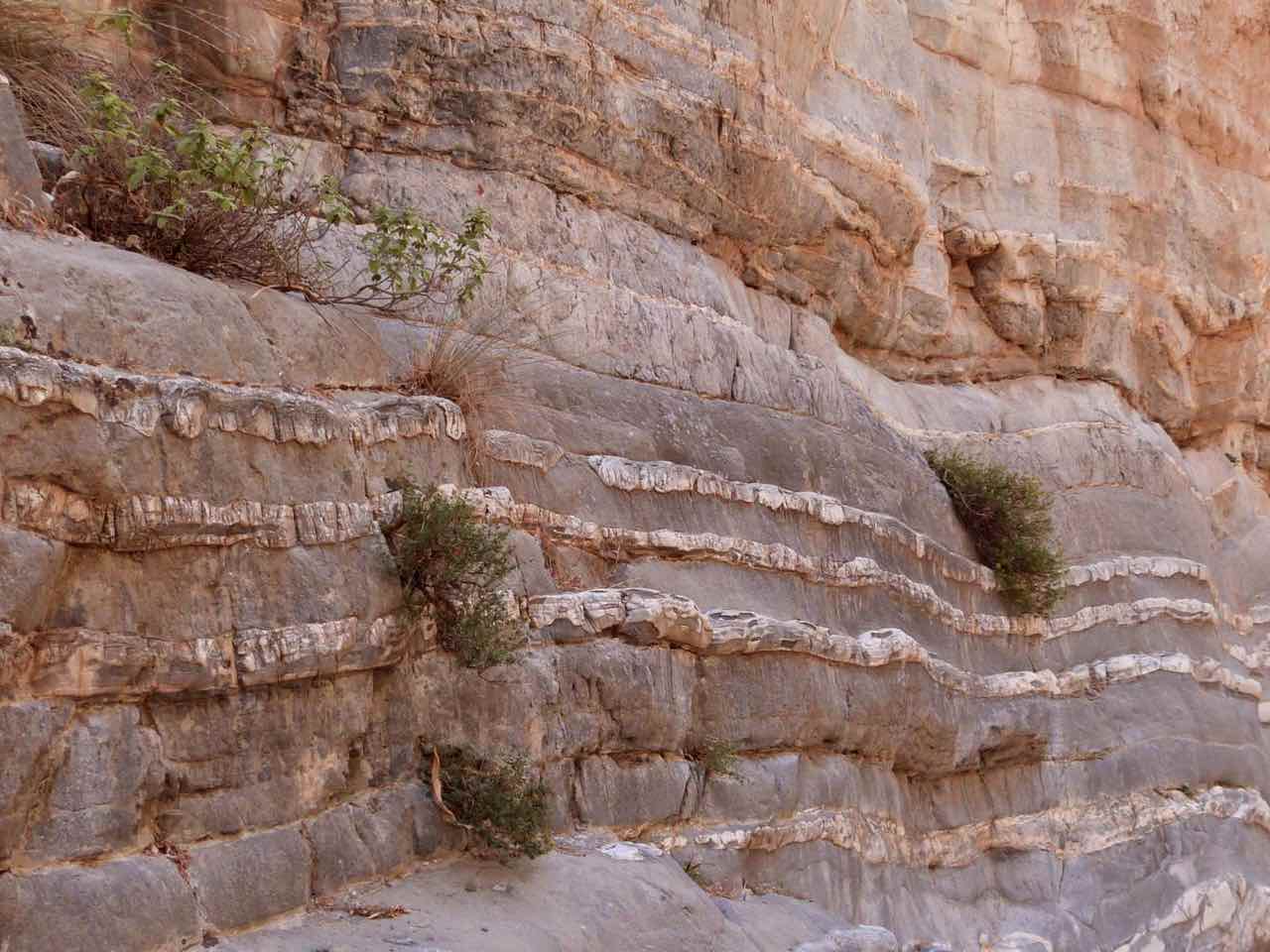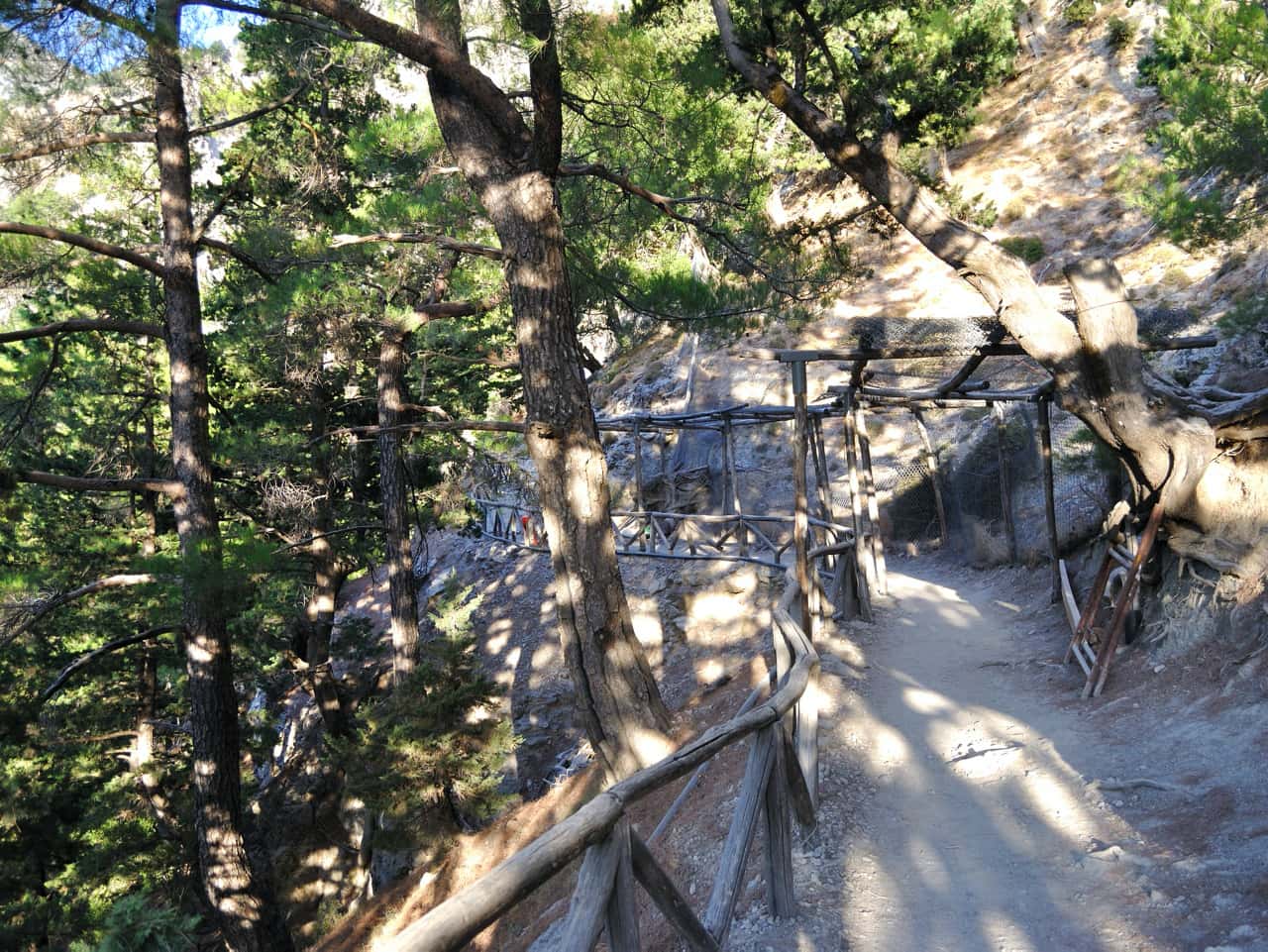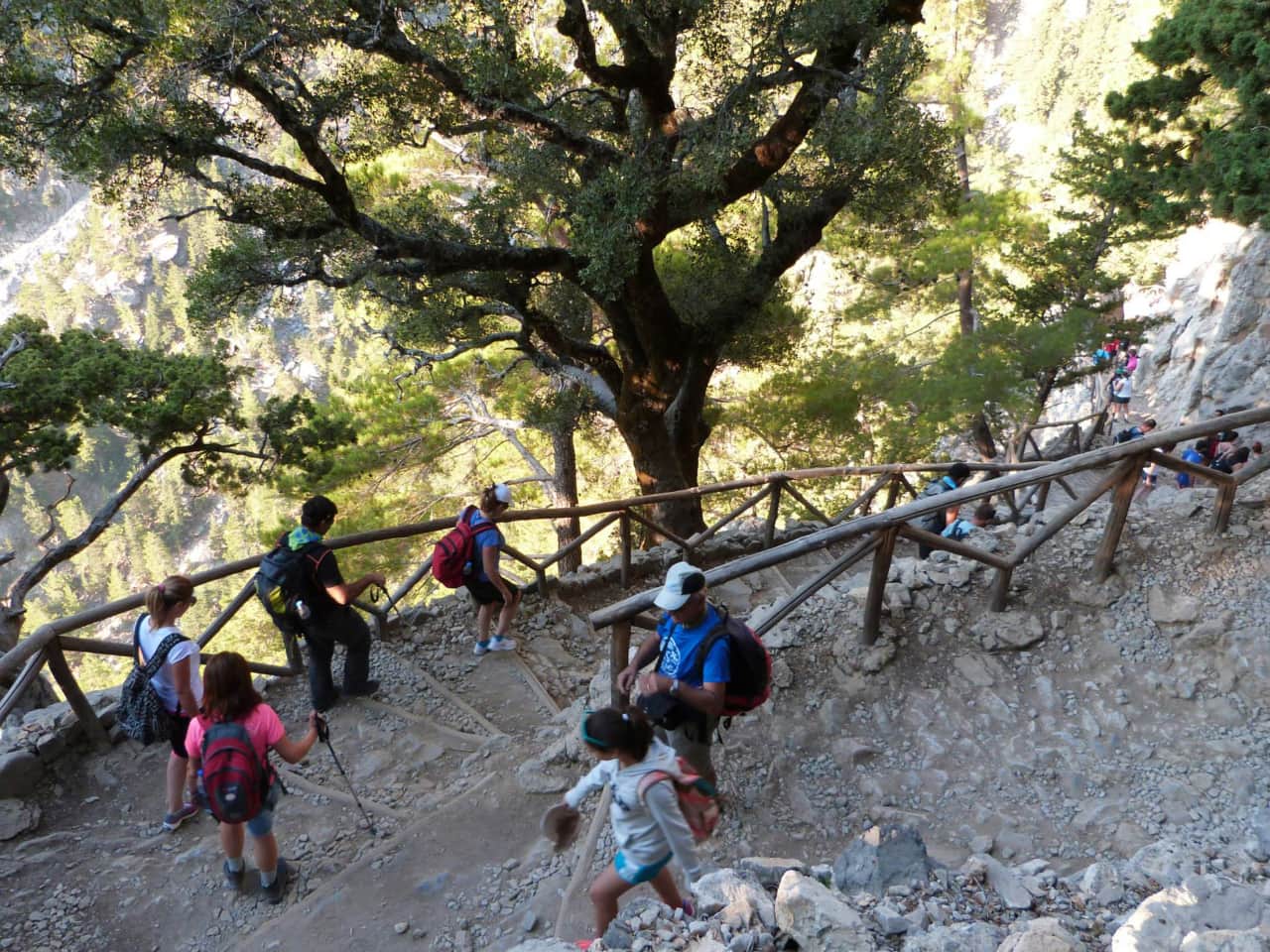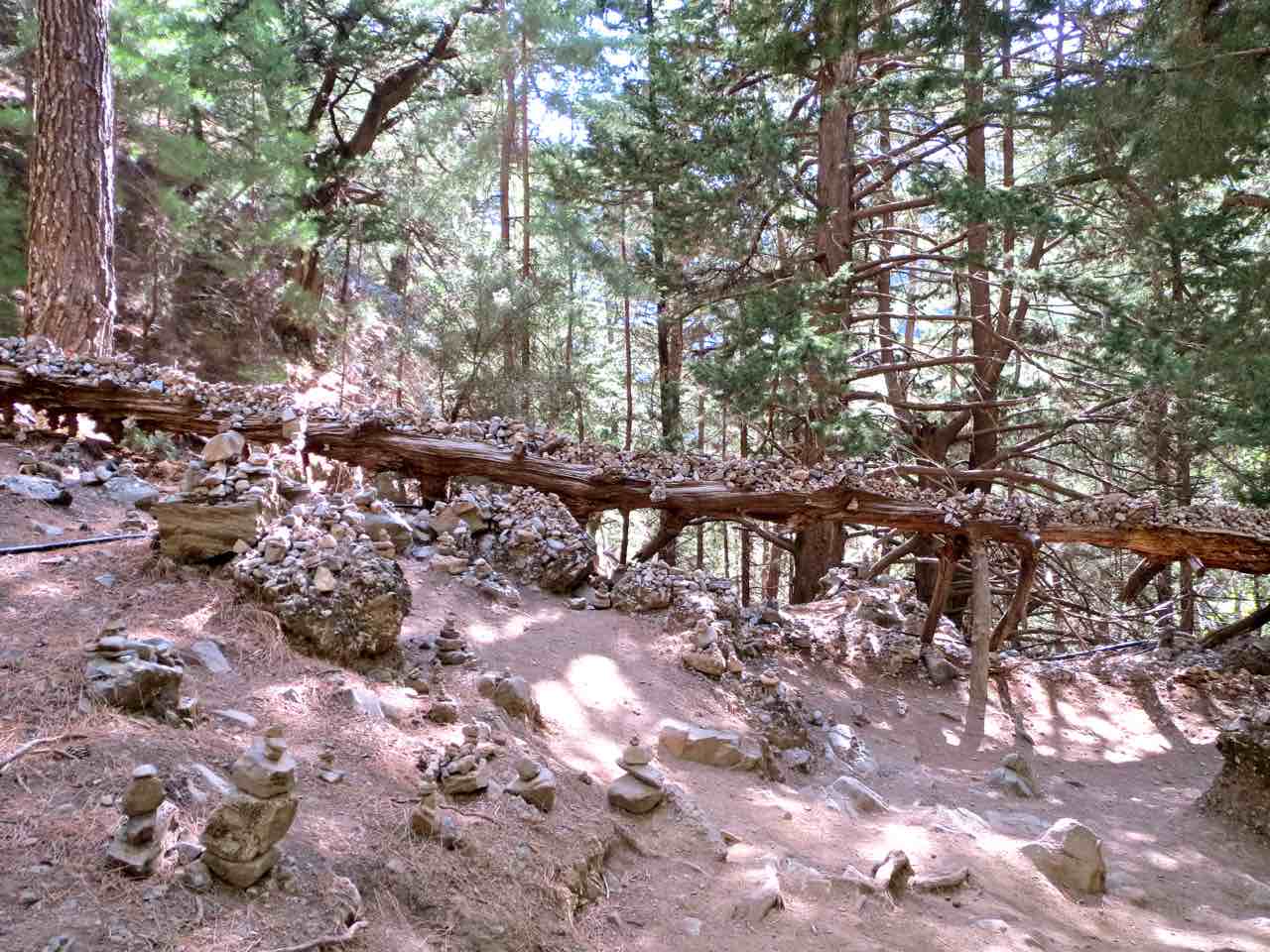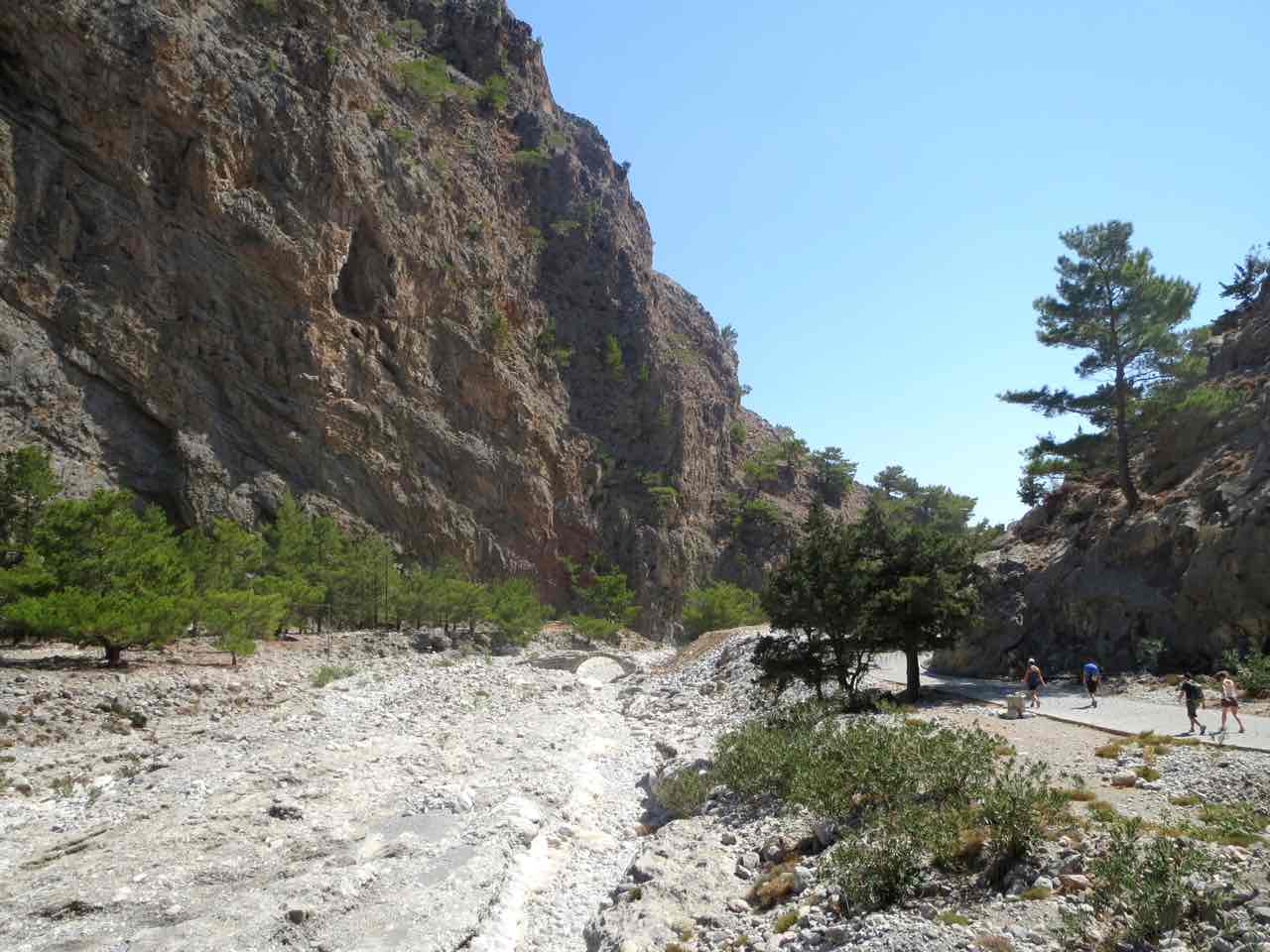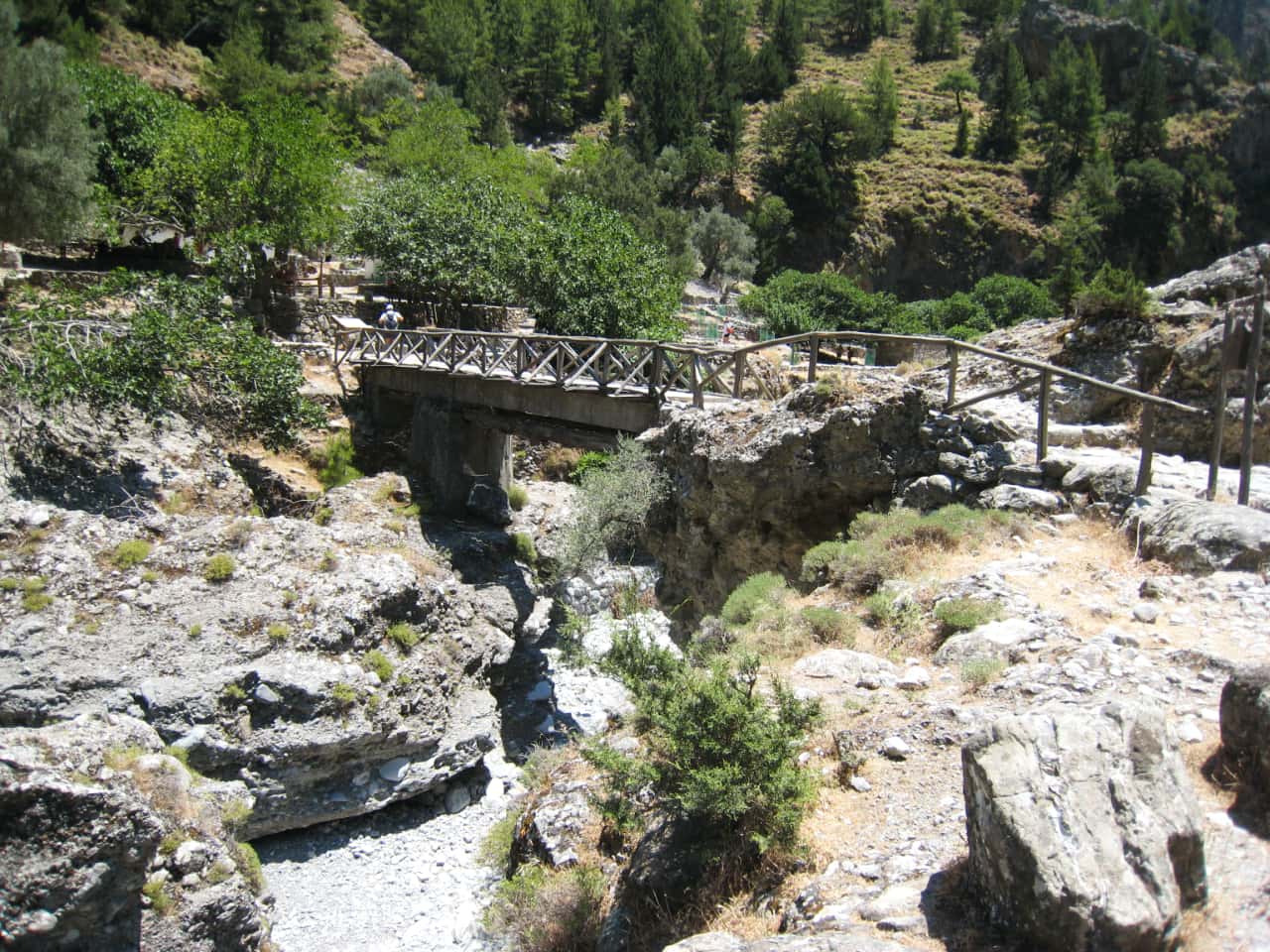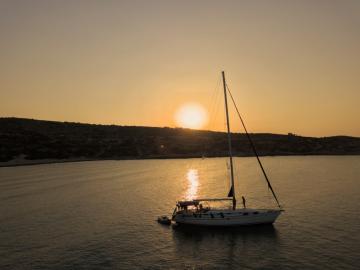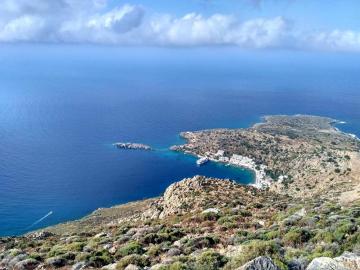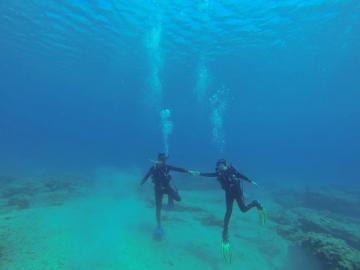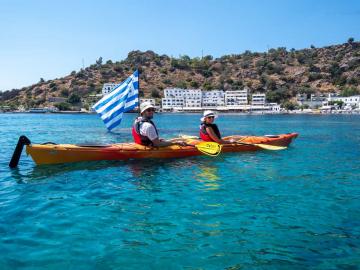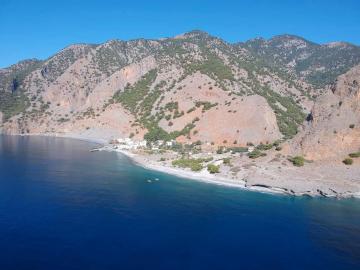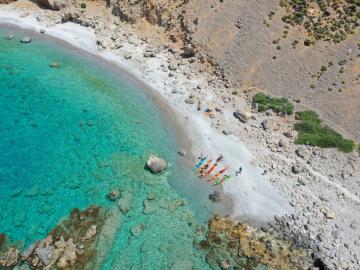description Book now
In the prefecture of Chania (also written “Hania”), the Samaria Gorge is the longest in Europe (total length 16km), and one of the most impressive gorges in Greece.
- Self-Guided
- Full Day
- Trekking & Hiking
- Gorges
- Wildlife & Nature
It starts from Xylóskalo, at an altitude of 1230m. The width of the gorge is 150m at its widest point and 3m at its narrowest.
White Mountains’ National Park is the only national park in Crete. It centers around the Samariá gorge, at an altitude of 1200m, and continues down to Ayia Rouméli, on the shores of the Mediterranean Sea.
Along with the surrounding slopes and a number of smaller gorges branching off from it, Samaria Gorge forms the whole of the area designated as a national park, a status that offers protection to over 450 species of plant and animal, 70 of which are endemic to Crete.
Samaria or the Samaria Gorge is one of the main sights of Crete, the second most visited (following the Minoan palace of Knossos) and by far the most popular walk. Every tourist who visits Crete will have heard of this beautiful gorge or soon will. The locals call it the “Farangas” or “Great Gorge”, both in admiration at its beauty and to differentiate it from the many other, smaller gorges of Crete.
More than a quarter-million people walk through the gorge every year from May to October. In winter the gorge is closed to visitors due to the danger posed by water and falling stones.
If you would like to avoid the crowds, you could choose to start your walk towards the middle of the day. This way you could reach Agia Roumeli in the evening, having enjoyed the gorge all to yourself. You could spend the night in Agia Roumeli and then have a wonderful day at the beach before you leave.
The Samaria National Park has great flora and fauna, unique species of flowers and plants protected under international law. There are almost 450 plant species in the gorge, and not a single flower may be removed from Samaria, by law. This a significant goal in order to protect the delicate ecosystem of Samaria so that thousands of visitors can continue to enjoy it each year.
In Samaria, you can admire the forests of huge pine and cypress trees, a picture from Crete’s past, when the kri-kri, the wild goats of Crete inside Samaria gorge island was covered by forests famous for their timber, ideal for building strong ships. Inside the gorge maybe you will meet some of the wild goats of Crete, which the locals call “agrimia” and tourists call “kri-kri”. The Cretan wild goat is endemic to Crete and you will probably see some in the village of Samaria, as they often approach the houses at the edge of the village.
How to Get There
The access to the entrance of Samaria, “Xyloskalo“, is made by bus which starts from the central bus station in Chania and culminates in “Omalos“. The ticket costs 6.90 €
“Xyloskalo” is the northern entrance to the “National Park of Samaria” and the ticket costs five Euros (€ 5).
At the end of crossing the gorge you reach “Agia Roumeli” where the boat of Anendyk departs towards “Sfakia” (ticket € 10) or “Sougia” (ticket 8,5 Euros) or “Paleochora” (ticket 14 Euros) or “Loutro” (ticket 5,50 Euros) or “Gavdos” (ticket 15 Euros).
The return from Sfakia, Sougia or Paleochora to Chania is made by bus and the ticket price is seven Euros and sixty cents (€ 7,60) from Sfakia and Paleochora and seven Euros and ten cents (7,10€) from Sougia.
If you issue simultaneously both tickets to go to Omalos and return from Sfakia, all tickets are fourteen Euros and thirty cents (€ 14,30).
Total daytrip Samaria: about thirty Euros (~ 30 €).
Alternative Route
If you do not wish to cross the entire path of the gorge, you can reach Sfakia and Paleochora or Sougia via a bus (ticket costs € 7,60) and then take the boat ANENDYK (ticket costs € 9) to Agia Roumeli, where you start in the reverse crossing of the gorge (ticket costs € 5).
For the itinerary, Anendyk, Sfakia > Agia Roumeli > Sfakia there is an offer at a price of fourteen Euros and fifty cents (€ 14,5).
The total cost of the alternative route visit to the National Park of Samaria: about Twenty-seven Euros (~ € 27).
The management body suggests that the entrance to the canyon from Omalos be done as early as possible. The crossing must be done slowly, with many stops and following the instructions of informational placards and guards. The visitors must have appropriate clothing, footwear, and sun protection (hat, sunscreen).
Staying for one or more nights in Agia Roumeli - Artemis Studios or Loutro and maybe Hotel Porto Loutro will make the visit more relaxing and enjoyable.
Do Not Forget
A water bottle that you can refill on the way.
Sun cream and a hat, especially for the last part of the walk which has very little shade.
Good shoes. These don't have to be hiking boots but you won't be contributing to your enjoyment by wearing tennis shoes or sandals.
Some food. There is no food available inside the National Park.
A jumper for the early morning: it can be cold at 1200m.
A supply of plasters in case of blisters.
A Brief Hiking Map
As you walk downhill, you will come across the church of St. Nikolas, built on the ruins of an ancient temple. Halfway down the gorge lies the old village of Samaria; its few houses are now used by the park wardens. Quench your thirst with mountain water running from the gorge’s springs. Keep walking. At some point, you will reach Pórtes (also called “Iron Gates”), the three narrowest passages of the gorge. The steep cliffs here tower as high as 500m above sea level. This route also goes past Venetian castles and ruins of prehistoric settlements as well as remnants of many other historical periods. As you are walking, you might feel as if someone else is watching you: the presence of the wild Cretan goats, known as “Kri Kri”, will definitely make this route particularly exciting! The hike ends at Ayia Rouméli, where you can catch the ferry to Hóra Sfakion.
Ayia Roumeli
Ayia Rouméli is a small coastal village that you reach after walking through the Samaria Gorge. From here a frequent boat service will take you directly to Loutró and Hóra Sfakion. The ancient Greek site of Tára is on the left (east) hill as you exit the gorge. Many of the finds from Tára are housed in the Archaeological Museum of Chania. Tára flourished during Greek, Roman, and Byzantine times. In Ayia Roumeli you can also visit the Byzantine churches of Panayia, Ayia Triada, and Ayios Pavlos, a Turkish castle and an exceptionally beautiful beach.
Nearby beaches: To the east of Ayia Rouméli discover the beaches of Mármara (at the exit of the Arádaina gorge), the wild beaches of Lýkos and Finikas, and the charming village of Loutró.
Loutro
You can make a short or even a longer stop here on your way back to the point where your hiking adventure in the Samaria gorge began. The village can be reached by boat from Hóra Sfakion and Ayia Rouméli or on foot from Anopolis, Hóra Sfakion, and Ayia Rouméli. (Hiking tip: The footpaths appear deceptively short, especially in the heat of the summer. In addition, they may also be dangerous for inexperienced hikers. If you are not a hiking expert, take the boat from Hóra Sfakion; the trip lasts about 20 minutes.)
What can you do here?
Well, first of all, you can just enjoy the laid-back atmosphere of the place.
If you feel bored, daily boats will take you to the beaches of “Sweetwater” (where freshwater pours into the sea) and “Mármara”.
There are footpaths leading to “Pervolákia” and “Timios Stavros” beaches, and a rather strenuous hike will take you to the beautiful village of Anópoli, high on the cliff overlooking the Mediterranean Sea.
Rent a boat to explore the area around Loutró.
Dive to explore the crystal-clear waters and the amazing seabed of the Mediterranean Sea.
Take a boat and go on a day trip to the island of Gávdos, the most southern tip of Europe—the dolphins will show you the way.
Embark on a sailing adventure to discover inaccessible beaches—you might find a completely deserted one you can have all to yourself!
Gorge practicalities: The National Park that houses the gorge is open from May to October; in the first and last few weeks of that period it may close if there’s a danger of flash floods.
Useful Contact Details
Greek National Tourism Organisation in Crete: 28210 246299
Tourist Information Office: 28210 36155
Citizens Help Desk: 28213 41800
Municipality of Chania: 28210 92000
Bus services: 28210 98888 & 28210 93052
Chania airport: 28210 63171
Via Visit Greece
Location
Honest Reviews
The reviews for the Samaria Gorge - The Longest in Europe
